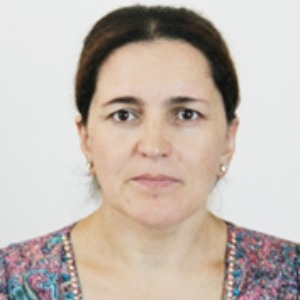Title : Traditional use of Capparis Herbacea willd. For treatment of diabetes in western Pamir (Badakhshan)
Abstract:
Diabetes is a common and serious metabolic disorder throughout the world. It is caused by the deficiency of hormone insulin in the body causing improper utilization of glucose. Researches on diabetes in Tajikistan show that it increased here tremendously. So, S. I. Nazarova (2014) shows that if in 2000 in Tajikistan people with diabetes consist of 166,00 out of 100000 population, in 2009 this number raised to 259.8 out of 100000, in 2010- 293.3 out of 100000, in 2011- 303.1 out of 100000 and by 2012 this number reached 321.8 out of 100000. The same source reports that in 2011 totally 24233 people with diabetes were registered: 2252 (9.2%) type 1 and 21981 (90.7%) type 2. S.I. Nazarova (2014) also reports that in Badakshan Region of Tajikistan there are registered 838 people with diabetes, while by 2015-2016 this number has been increased. Based on the report of Regional Diabetes Center of Bdakhshan in 2015 there were registered 1490 person with diabetes, among them 75 belong to type1 and the remaining 1415 to type 2 diabetes. According to this source, in 2106 the number of people with diabetes increased to 1608, out of which 125 belong to insulin-depended and the remaining of 1483 to non-insulin depended ones (Report…, 2016). Local inhabitants of Western Pamir widely use locally available plants for prevention and treatment of illnesses. The information of the current abstract includes documentation of information on use of Capparis herabacea for treatment of Diabetes by the local people of Western Pamir. Data were collected based on semi-structured questionnaire. The questionnaire included number of plants known, their habitats, their local names, the parts of plants used, the time of collection, the mode of drying and storage, the form of use (e.g fresh or dried), the methods of preparation, the diseases which a plant treats, the frequency of use of a plant, threats to medicinal plants, conservation efforts, beliefs and indigenous knowledge transfer and demographic data about the informants. Interviews were conducted with patients, traditional and professional doctors and other people. During the research herbarium specimens were collected which were deposited in the Herbaria of Pamir Biological Institute. The research reviled that local inhabitant of Western Pamir widely use Capparis herbacea’s fruits and buds for diabetes, hypertension, stomatitis, parodontisis and as antiallergic during dermatitis and women’s diseases (Akobirshoeva, 2012). For that purpose, buds and/or fruits are boiled for 5-10 minutes. Such decoction is taken two times a day before meal. Buds and fruits are used independently and/or added to local soup so called “rugankhirvo”. Such soup is taken two times during the diabetes, hypertension and dermatitis. Powder, prepared from the buds and fruits is put on gums during stomatitis and parodontosis. Such mode of administration was not found in the literature of other countries. Thus, the observation of present study showed that use of Capparis herbaceous in Western Pamir has local character and proves the historical experience of local people in treating ailments.



